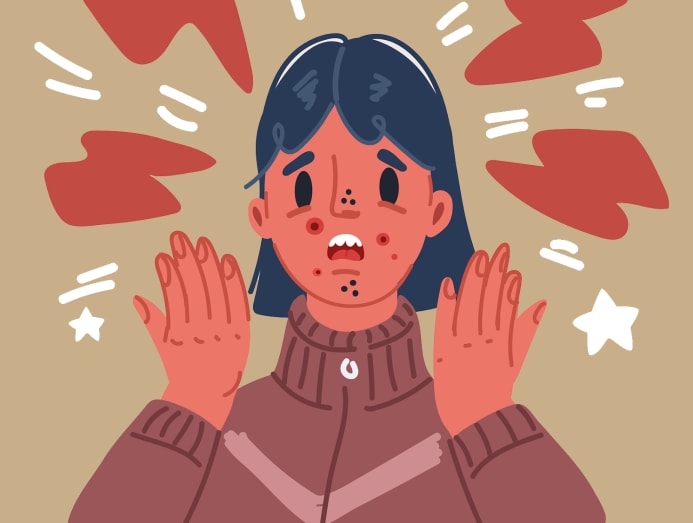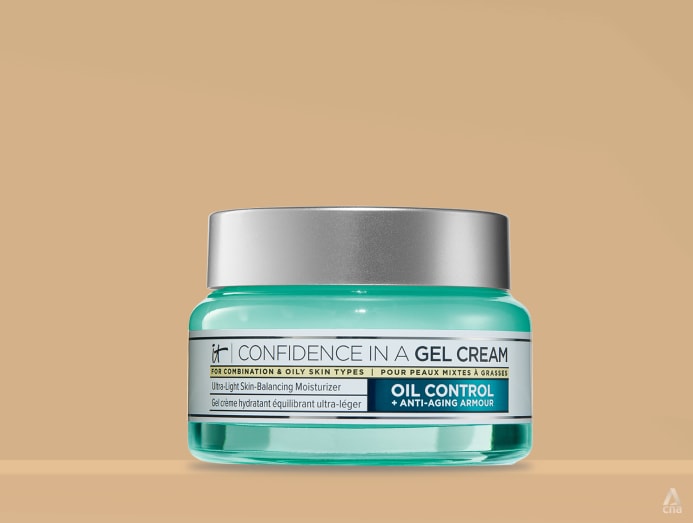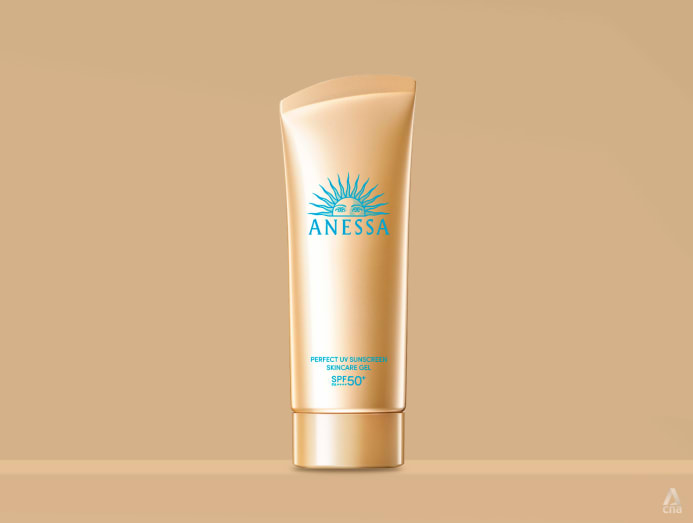Can your skin be oily and dehydrated at the same time? Here’s what you can do about it
CNA Lifestyle finds out why this happens and what can you do about it.

Is your skin oily yet dehydrated skin? (Art: iStock)

This audio is generated by an AI tool.
It’s not uncommon for many who believe that their skin is oily, to end up realising that it’s actually dehydrated. So why is oily skin often associated with being dehydrated?
“Dehydrated skin means that there is a lack of water and not oil. However, due to the lack of water, the skin will try to compensate by producing more oil,” explained Dr Liew Hui Min, consultant dermatologist and medical director, SOG – HM Liew Skin & Laser Clinic.
And here’s where things can go south.
To get rid of that excess sebum, you over-wash your face with harsh cleansers and skip moisturiser because you feel that your “oily” skin doesn’t need it. This incorrect beauty routine will inadvertently cause the skin more harm.
This vicious cycle of starving the skin of good lipids and causing the sebum glands to overcompensate and produce even more sebum can lead to an overproduction of oil that results in oily, yet dehydrated skin, said Dr Chester Lan, aesthetic doctor, Freia Medical.
In short, “oily skin can be made worse by dehydration”, said Dr Liew.
SIGNS OF OILY BUT DEHYDRATED SKIN

According to Dr Lan, dehydrated oily skin happens when the skin’s moisture barrier is compromised. This top layer of the skin is responsible for keeping the good stuff – natural moisture – in and the nasties – such as bacteria, pollution an UV rays – out.
And when this happens, it can result in:
- Enlarged pores: Pores appear more prominent as the skin tries to compensate by producing more oil; and sometimes the skin may appear flushed and red too.
- Acne: Dehydrated oily skin is more prone to clogged pores, which can lead to breakouts caused by inflamed comedones with blackheads
- Shiny and tight skin: The skin appears oily, especially along the T-zone, but can also feel tight and uncomfortable at the other areas.
- Flakiness: Despite the oiliness, there may still be dry patches or flakiness at certain areas.
MORE THAN JUST ACNE BREAKOUTS
One of the most common skin conditions that arises from having dehydrated oily skin is acne breakouts.
When dehydrated skin produces more sebum to compensate for the lack of moisture, this excess oil can mix with dead skin cells and clog the pores, which result in acne forming.
When skin health is compromised, it also makes the skin more susceptible to inflammation and bacterial growth, which further contribute to acne breakouts, added Dr Lan.

But that’s not the only issue that can stem from having oily dehydrated skin. Other skin concerns include:
1. Seborrhoeic dermatitis or a scaly rash. According to Dr Liew, while stress and a dry colder climate are some of its triggers, this chronic inflammatory skin condition, which can result in redness and itchiness on the mid face area, is also often associated with oily skin.
2. Dull complexion and uneven skin texture. Dehydration can cause the skin to appear dull and lifeless due to its reduced ability to reflect light, leading to a tired and sallow appearance, shared Dr Lan. “The lack of moisture may also affect the skin’s ability to shed dead skin cells properly, and as a result, dead skin cells can accumulate on the surface, leading to bumpy and uneven texture.”
3. Rosacea or long-term redness. While environmental factors like the weather and a dusty environment can trigger this underlying skin condition, having dehydrated skin can also make the skin more susceptible to rosacea flare-ups. And because many are not aware that they might have rosacea, the use of inappropriate and excessive skincare products can also cause a flare, explained Dr Liew.
4. Increased skin sensitivity. Because dehydration weakens the skin’s protective barrier, it can also make it more susceptible to environmental irritants and allergens. “These irritants easily damage the skin, resulting in redness, itching and irritation,” said Dr Lan.
HOW TO FIX YOUR OILY DEHYDRATED SKIN
The good news: Dehydrated skin is not permanent.
This is because the causes for dehydrated skin are usually external, explained Dr Liew.
The key is to address the underlying causes. And with oily, dehydrated skin, it is essential to address both the dehydration and oiliness, said Dr Lan.
Here’s what you can do:
STEP 1: AVOID HARSH CLEANSERS AND OVER-CLEANSING
Start your cleansing routine with a gentle cleanser that won’t strip the skin of its natural moisture. In addition, do not wash your face too often (more than three times is too much), as it can exacerbate dehydration and lead to more sebum production.
Try: Etat Pur Gentle Cleansing Foam, S$24.90

A delicate cleanser for the skin thanks to its biomimetic formula that respects the skin. It contains amino acids and humectants, to help balance the skin’s pH levels and maintain its moisture levels. Skin feels comfortable after cleansing, and never dry and taut.
Available at Watson stores and official Etat Pur stores on Lazada and Shopee.
STEP 2: CLARIFY
Use a mild exfoliant to remove dead skin cells and impurities trapped in the pores. Consider salicylic or glycolic acid, but in the lowest concentration possible, shared Dr Liew, so as not to aggravate and irritate the skin, and cause more damage.
Try: Dr Wu Mandelik Pore Refining Essence Toner, S$54.90

A gentle exfoliating toner that can be used daily. It removes impurities, dead skin cells and improves skin texture with a blend of mandelic acid (it’s a gentle AHA), salicylic acid, tea tree essential oil and witch hazel extracts.
Available at www.watsons.com.sg
STEP 3: HYDRATE
Keep skin hydrated by opting for a lightweight moisturiser with non-comedogenic formulas that won’t clog the pores. Look for active ingredients like glycerin, hyaluronic acid, vitamin B5, niacinamide and ceramides to boost moisture levels and strengthen the skin barrier.
Try: IT Cosmetics Confidence in a Gel Cream, S$90

An ultra-light, oil-free moisturiser that helps to reduce shine and excess sebum while keeping skin balanced and hydrated. And it achieves this by using an Oil Control System with Air Licium, zinc PCA, PHA, vitamin E, peptides, niacinamide and squalane.
Available at Sephora.sg.
STEP 4: PROTECT
Daily sunscreen application is important to protect your skin from the sun’s UV rays as it can dry the skin out and therefore, weaken its barrier. Choose a non-comedogenic water-based broad-spectrum sunscreen that will shield against UV while still being gentle on dehydrated, oily skin.
Try: Anessa Perfect UV Sunscreen Skincare Gel SPF50+/PA++++, S$36

This light gel texture goes on smoothly and with its new Auto Veil Technology working in tandem with its Auto Booster Technology, it creates a double protective veil, evenly covering the skin to shield it against UV damage. Also contains skincare actives – unshiu citrus, purple tea, green tea and yellow flower extracts to keep skin hydrated and protected from environmental stressors.
Available at Watsons, Guardian and BHG Welcia stores.
Ultimately, the aim is to re-establish and restore skin balance, and doing the above can restore oily dehydrated skin back to a healthy, hydrated state.






